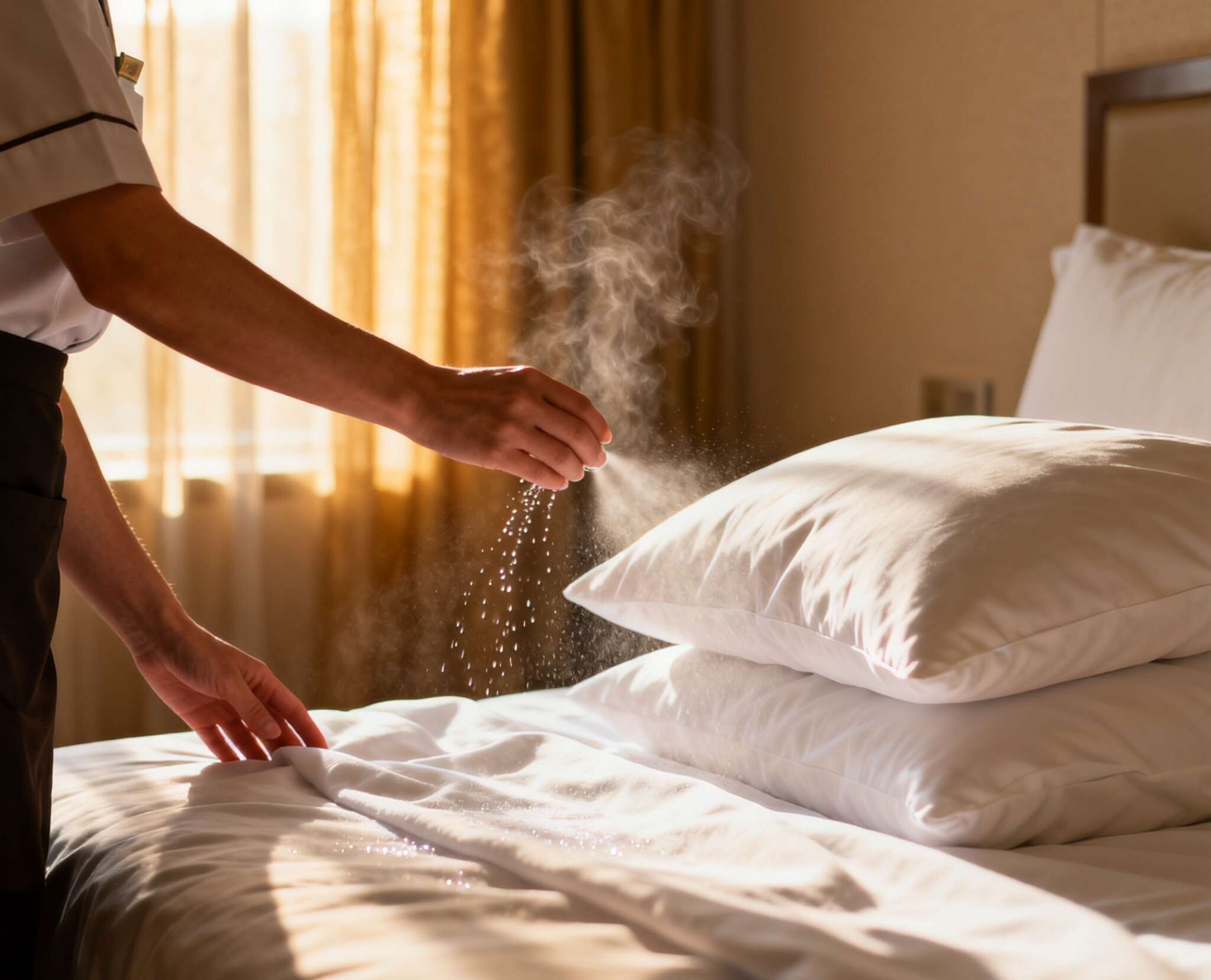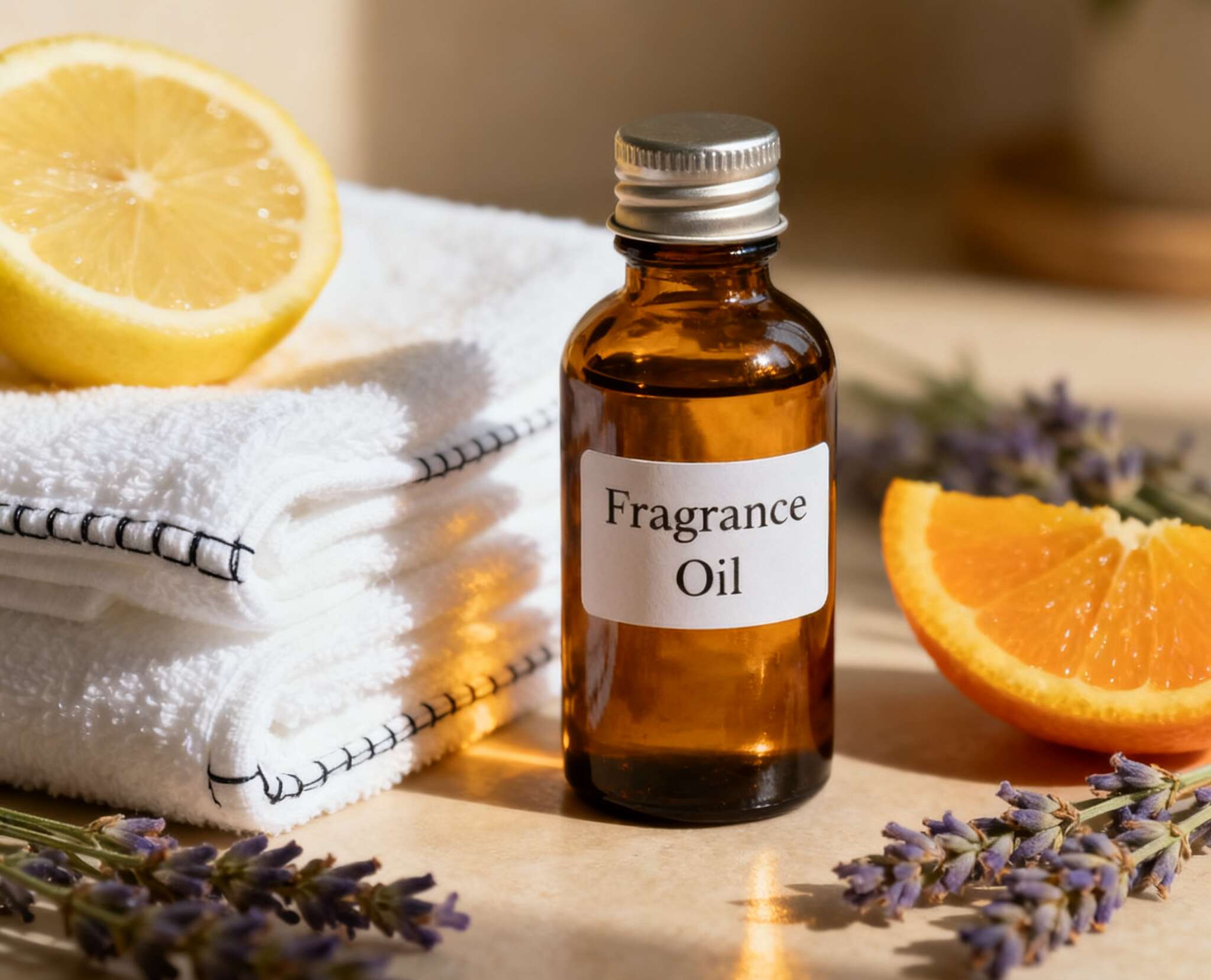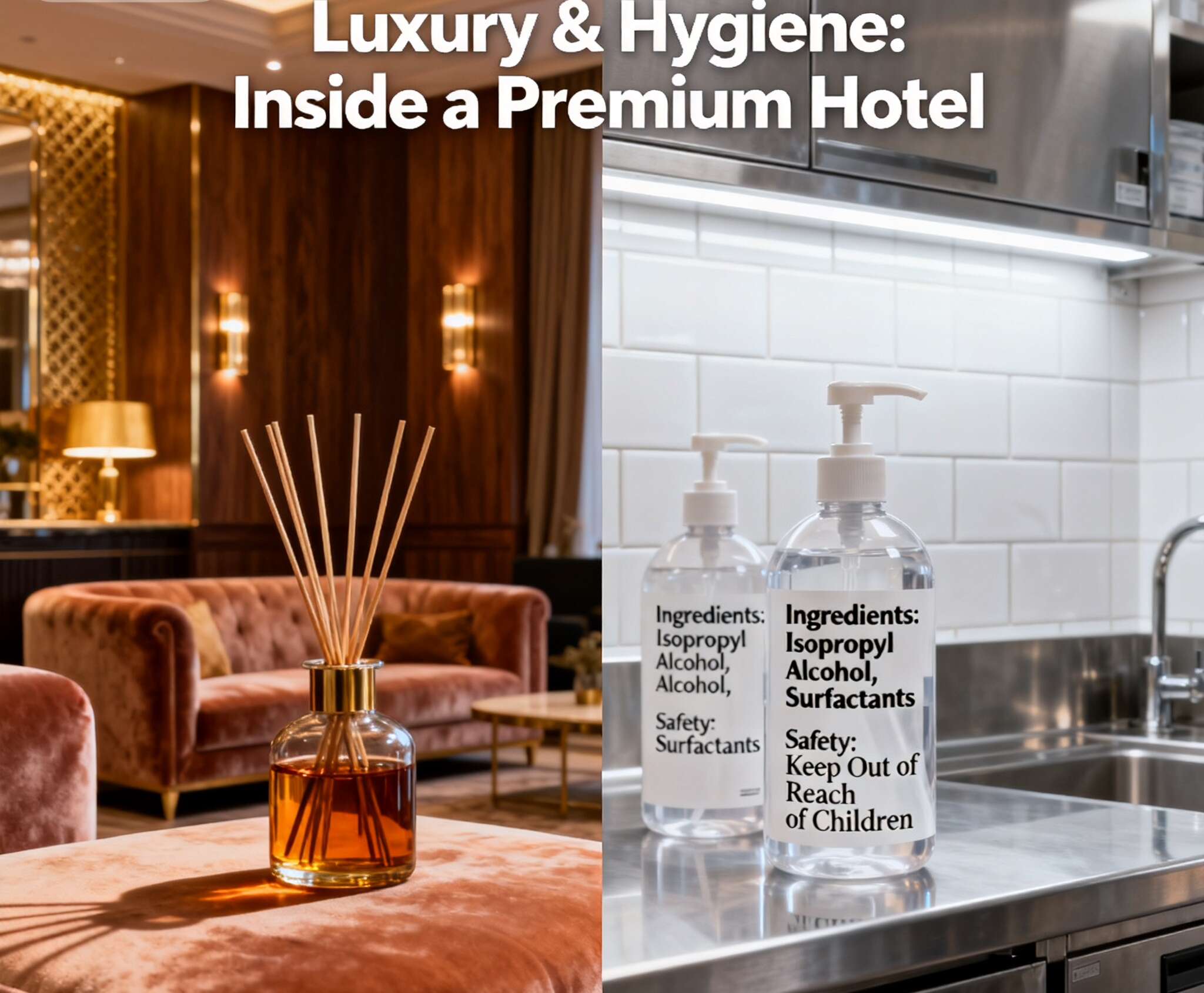



You run a hotel. Guests judge “clean” with their eyes, sure—but their nose votes first. A light, right-fit scent can reinforce housekeeping wins, nuke bad odors, and cue “this place is cared for.” Overdo it and… headaches, complaints, even chargebacks. This essay lays out what works, what to avoid, and how to turn fragrance oils into a clean, compliant, guest-friendly edge—without hype.
People read space fast. A subtle lobby accord—citrus-herbal, airy musk, a whisper of wood—tells guests “fresh, safe, calm.” Studies show pleasant ambient scents can lift positive responses (dwell time, satisfaction) in the low double digits, and hotel experiments keep finding a small but repeatable boost in “room feels clean.” That bump vanishes if the odor profile fights the space (e.g., heavy gourmand in a humid hallway).
Working rule: Scent should follow cleaning, not hide it. Treat fragrance as a “cleanliness cue,” not a cover.
Micro-case, no fluff:
Here’s the straight talk: fragranced cleaners emit more than “nice smell.” Common terpenes can react in indoor air and create secondary pollutants. Most guests don’t notice; a meaningful minority does. Surveys in big populations suggest roughly one-third of adults report some sensitivity to scented products. That’s large enough to plan for.
So we:

This is where a lot of programs stumble—good intentions, bad paperwork.
Bottom line: match fragrance choices to compliance targets before rollout. Keep SDS, IFRA certs, allergen lists, and online disclosure in one shared folder the moment you scale.
Laundry is your stealth billboard. Linen quality matters, but linen sillage (the whisper of scent as guests move) sells the feeling of clean.
If you want a quick start, explore I’Scents’s Home Care and laundry lines:
We tune for wash chemistry (anionic/nonionic systems), local water hardness, and drying routines. In other words—real-world laundry, not lab fantasy.
Two common deployment paths:
Simple calibration hack: Start at the lowest setting for 72 hours and track guest comments + housekeeping notes. Bump one notch only if both are green. If two guests log sensitivity in 24 hours, dial back immediately. Don’t wait for a GM email—move now.
Housekeeping leaders love checklists. Here’s a punchy one you can steal:
Fragrance Policy (Front & Back-of-House)
Staff Training
| Topic | Evidence Snapshot | Takeaway for Hotels |
|---|---|---|
| Ambient scent & guest response | Controlled studies often report 3–15% lift in positive responses when the scent is pleasant and low-intensity. | Keep intensity subtle; pick accords that match materials (stone, wood, textiles). |
| Perceived cleanliness | Light, fresh accords nudge “this room is clean” ratings upward in trials. | Use scent after real cleaning; never mask. |
| Sensitivity prevalence | Large surveys show ~1/3 of adults report some reaction to fragranced products. | Offer fragrance-free options; build a switch-to-FF SOP. |
| Allergen disclosure | Threshold at 100 ppm triggers listing under certain rules. | Maintain allergen statements for web posting; partner with suppliers who auto-generate them. |
Numbers vary by study and setting, but the ranges above are strong enough to guide decisions today.

| Use-Case | Pain Point (Hotel Jargon) | What Usually Works | What Not To Do |
|---|---|---|---|
| Turn service on high-floor corridor | “Wet-vac smell,” elevator rubber, stale air at shift change | HVAC low-ppm citrus-tea for 30–45 min; door-propping cycle; microfiber swap | Dumping heavy gourmand; back-to-back sprays |
| Smoking incident in non-smoking room | “Ghost smoke,” embedded in drapes | Enzyme + ozone cycle, then tiny green-citrus top; replace pillow protectors | Blast sweet florals to cover it |
| Pet-friendly floor | “Dog room” re-rent | Deep extraction, enzyme, linen swap, then airy musk | High-dose woody amber that lingers for days |
| Banquet hall turnover | Food smell meets table linen | Short herbal-citrus in HVAC; reserve fragrance-free tablecloth storage | Spritzing centerpieces right before guests enter |
| Spa/fitness | Eucalyptus overload + sweat | Gentle mint-tea accord, increased fresh-air intake | “Medicinal” camphor overdose |
| Item | Ask Your Supplier | What You File |
|---|---|---|
| IFRA Category & certificate | IFRA Conformity, usage category, max level | IFRA cert in the hotel’s shared drive |
| Allergen listing | EU-style allergen components with thresholds | Online disclosure page if required |
| SDS & label | Latest SDS per SKU, GHS alignment | Safety binder + QR in storage |
| Safer Choice target | Ingredient screen or fragrance-free option | Procurement note for RFPs |
| Change control | What happens if oil changes 1 component? | Keep a spec revision log; re-smell test |
No drama, just paperwork discipline.
Fragrance—done right—anchors brand memory. Guests step out, catch a similar note at home, and remember your lobby. That recall nudges repeat bookings and better review language. You won’t fix occupancy with scent alone (let’s be real), but you can reduce “smells weird” reviews, which quietly tax conversion.
The trick is coherence: laundry, public areas, and amenities should sing the same melody, not fight each other. Think citrus-tea in lobby, linen with the same clean-musk spine, amenities that echo it. That’s brand memory on a budget. No magic, just taste and consistency.
You asked for practical, fast, and compliant. That’s our lane.
How a pilot usually runs (simple):
We keep it real tho: there’s no one-scent-fits-all. Large resorts often need two profiles (public vs. rooms). That’s fine and normal.

Use soil-masking tops that survive hot wash and don’t fight your room scent. Test dry-down on towels hanging 24 hours—lots of hotels skip this and regret it.
You want a soft, modern musk with low powdery build-up. Too powdery reads “old closet.” Too sweet reads “cheap.” Ask for low-yellowing, heat-stable bases.
Confirm IFRA category and maximum dose. If you’re in California, set up the online disclosure page on day zero. It avoids headaches later.
Start low. Track guest comments. If the bell team notices “wow, smell,” you’re already too high.
(Need help picking fast? Ping the team via I’Scent.)
Not perfect grammar? maybe. But it works.
| Question | Fast Answer |
|---|---|
| Can we scent EPA-registered disinfectants ourselves? | No. Don’t alter labeled disinfectants. Choose a ready-scented product or keep disinfectant scent-free and layer a separate compliant fragrance later. |
| Do we need allergen lists online? | If your market requires it (e.g., CA rules), yes. Keep the page current. |
| What if guests complain about strong smell? | Dial back dose within the hour. Switch to fragrance-free in that zone for 48 hours. Track in PMS. |
| Will scent fix smoke or pet odor? | Only after you remove the source (ozone/enzyme/extraction). Scent is a finishing cue, not a cover. |
| Do we need separate SKUs for sensitive areas? | Yes: fragrance-free for rooms, light-scent for public zones. Two rails keep ops flexible. |